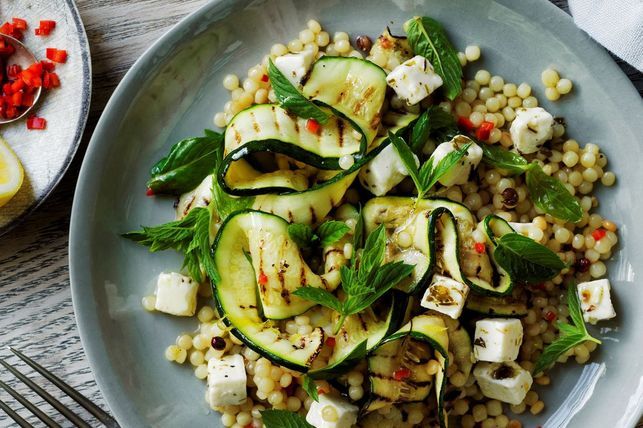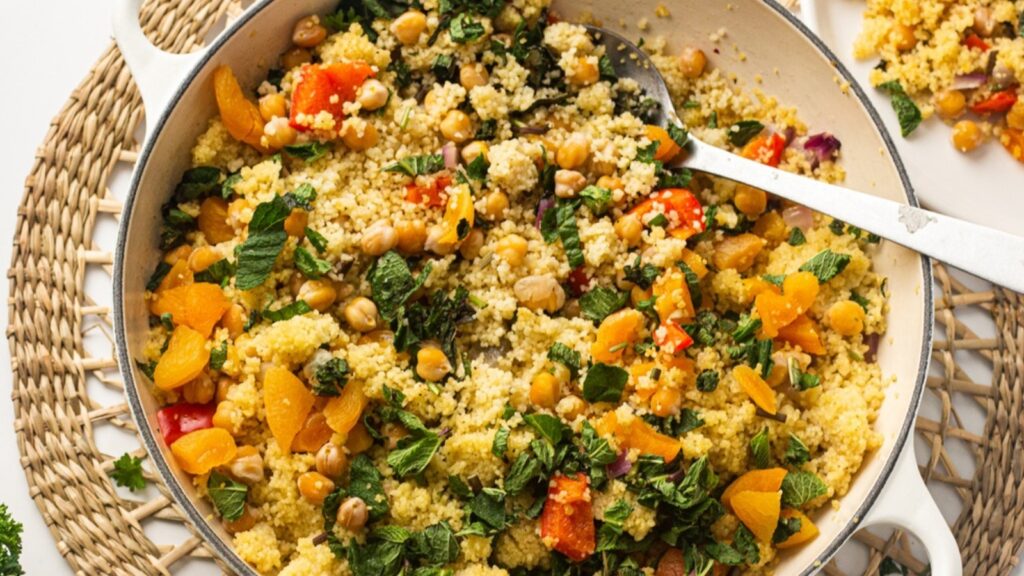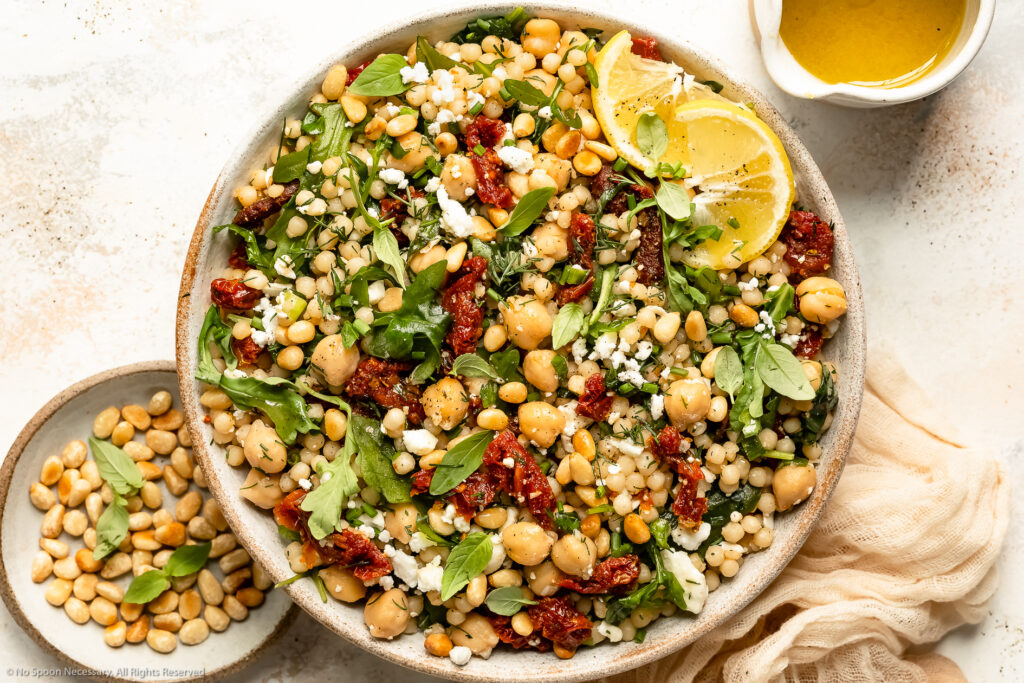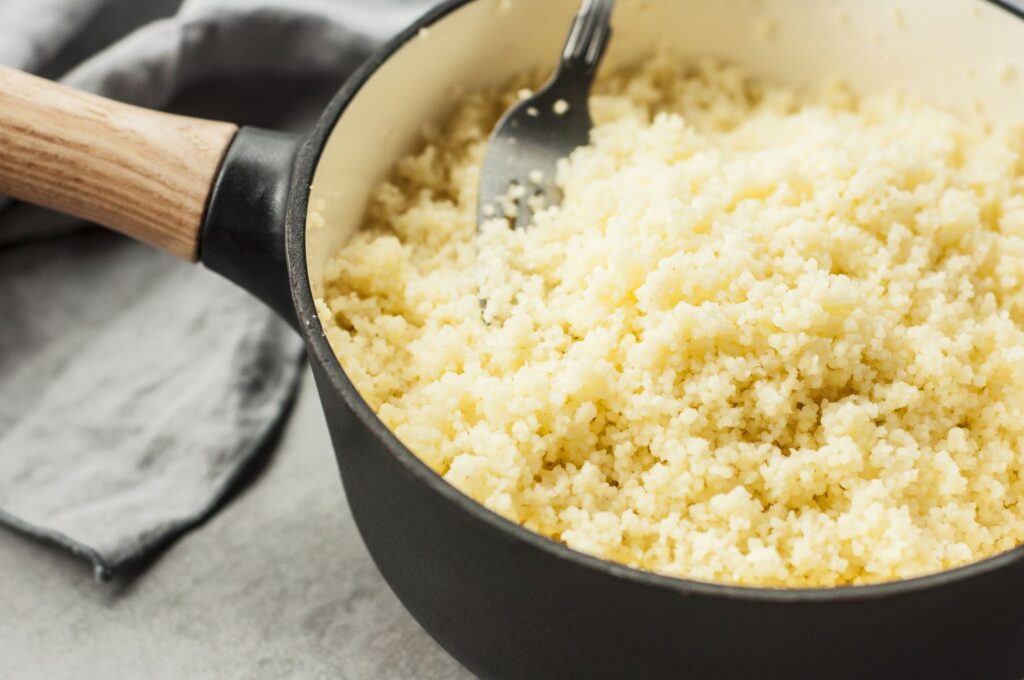Pearl Couscous for the Right Nutrition-Tips and Benefits

Couscous, the extraordinary food obtained from wheat 100% durum semolina, is a balanced dish par excellence. You can consume it with confidence as it is a healthy food. It is a type of pasta that has a mild, fairly neutral flavor, which is easily impregnated with the aromas of the ingredients with which it is cooked.
There are different variations of couscous; namely:

- Moroccan couscous is a small grain, approximately three times bigger than a grain of corn flour.
- Pearl couscous or Israeli couscous with semolina granules about the size of peppercorns and usually steamed in the traditional long cooking method.
- Lebanese couscous, which is larger than Israeli couscous with starch granules about the size of small peas.
Because of its nutritional value, its convenient method of cooking, and the delicious recipes you can prepare with it, we are going to talk in this post about pearl couscous. We will be referring to the way of cooking, tips, and benefits of this pasta.
The staple food that helped a country through difficult times
Pearl couscous, also known as Israeli couscous, was created in the early years of the 1950s, shortly after Israel was declared an independent nation. It is believed that Israeli Prime Minister David Ben Gurion asked a team of experts to develop a substitute for rice, given the nation’s food shortages. In the early 1960s, pearl couscous began to spread throughout the Mediterranean region, eventually reaching Northern and Eastern Europe.
Thanks to its versatility, it quickly became a staple in many European countries, including Italy, Spain, and France. Pearl couscous continued to spread throughout the world and eventually made its way to the United States in the late 20th century. Today, pearl couscous is widely used across the world.
It is a popular ingredient in salads, soups, stews, and other dishes. It is often served as a side dish, or even as a main course. Pearl couscous has become increasingly popular due to its good nutritional value at a low cost, and its ease of preparation. It can be cooked in a variety of ways, and it can be served with almost any type of sauce or topping. Pearl couscous is a type of pasta that has a unique texture and flavor, and it’s perfect to add to many dishes, from fresh salads to hot stews.
How to prepare an easy pearl couscous dish?

This is a food that is quick and easy to make. So, to form the small balls of this couscous it is necessary to moisten the durum wheat semolina so as to obtain a dough with which to make the balls to toast then in the oven. This way, you can easily add them as an ingredient in any recipe, like the one described below.
Simple pearl couscous recipe
This is a very easy-to-cook recipe for you to try at home and can be seasoned with almost any fruit, vegetables, meat, seafood, herbs, or spices you can imagine.
- In a saucepan put 2 tablespoons of olive oil.
- Add 2 fresh onions finely chopped and 2 carrots cut into cubes and sauté until golden brown.
- Fill a pot with 350 g of vegetable stock, add the juice of half a lemon, a pinch of salt, 1 tablespoon of coriander and ½ teaspoon curry powder, and 350 g of pearl couscous pasta.
- Add onions and carrots.
- Bring to a boil and then turn off the heat and cover the pot.
- Let it rest for 5 minutes so that the semolina absorbs the liquid and you will see how it increases in size.
- Once the cooking is finished, add salt to taste.
There are numerous recipes using pearl couscous as the main ingredient. In this link riceselect.com/product/riceselect-pearl-couscous you can find some of them. Also, there you will learn more details about cooking this couscous and interesting information concerning its nature.
Tips
Pearl couscous is a popular food in the Mediterranean diet and today it has caught the attention of many people for its nutritional properties.
Its use has expanded around the world and nowadays is part of many cuisines which have adopted it as a common ingredient of their menus.
It is often used as a side dish, replacing rice, potatoes, noodles, etc. Likewise, it is a great option to enhance salads, and soups, or as a delicious bed for grilled or roasted fish, vegetables, or meat.
It is a type of whole grain with a similar appearance to rice, but it is actually a pasta made of, as noted, semolina and wheat flour. Because of this wheat-derived component, coeliacs should be aware that pearl couscous is not gluten-free.
When Israeli couscous is cooked, it swells as it absorbs liquid and acquires a very pleasant texture. As it does not have a strong flavor, it combines well with all kinds of broths and foods.
This couscous, as with tapioca or rice semolina, is currently considered a food for children, although its delicate texture and easy digestion have become fashionable on the menus of many international chefs.
Health benefits

Pearl couscous is often considered a healthy alternative to pasta since it is made from whole wheat flour. It provides benefits to the body, such as:
- It helps boost the immune system, because of its content of selenium, the antioxidant that contributes to reducing inflammation and decreasing oxidative stress in the body.
- It is a good source of plant-based protein. Approximately 16-20% of the body is made up of proteins, which are made up of amino acids involved in most metabolic processes in your body and, of course, in the formation of muscle tissue.
- It is rich in antioxidants and vitamins E and B, which exert a synergistic effect that contributes to the good health of the nervous system.
- It provides small doses of calcium, potassium, iron, and zinc, as well as moderate amounts of magnesium and phosphorus, which together with fiber help regulate the metabolism.
- It is specifically recommended for athletes and people with significant physical activity.




